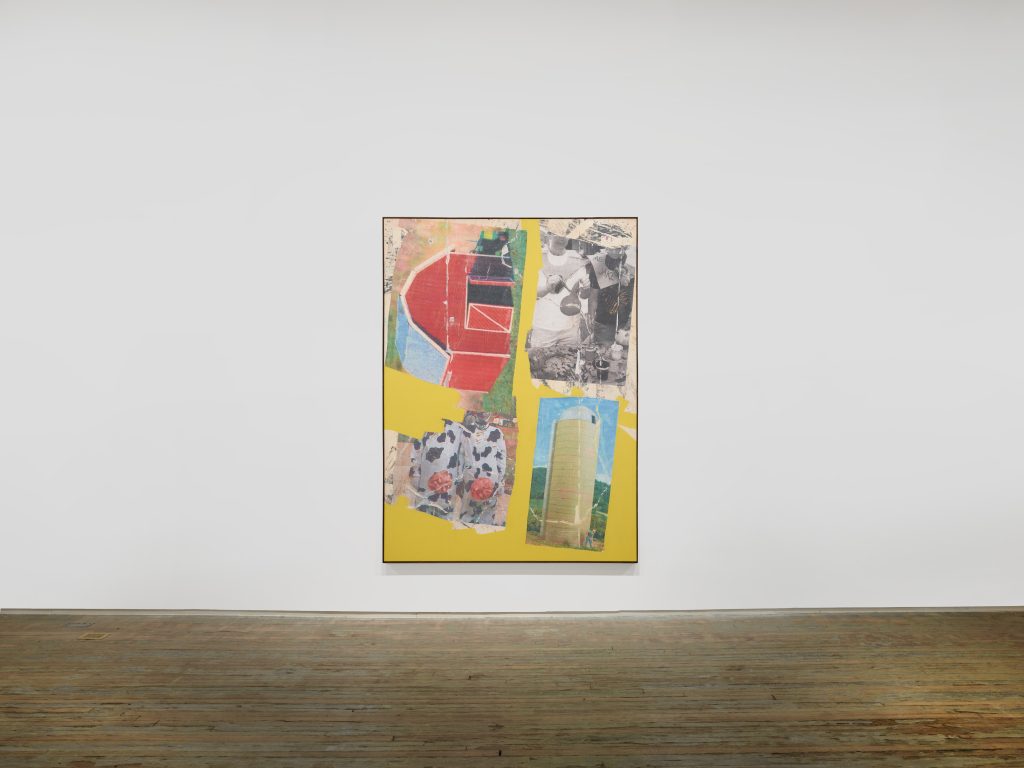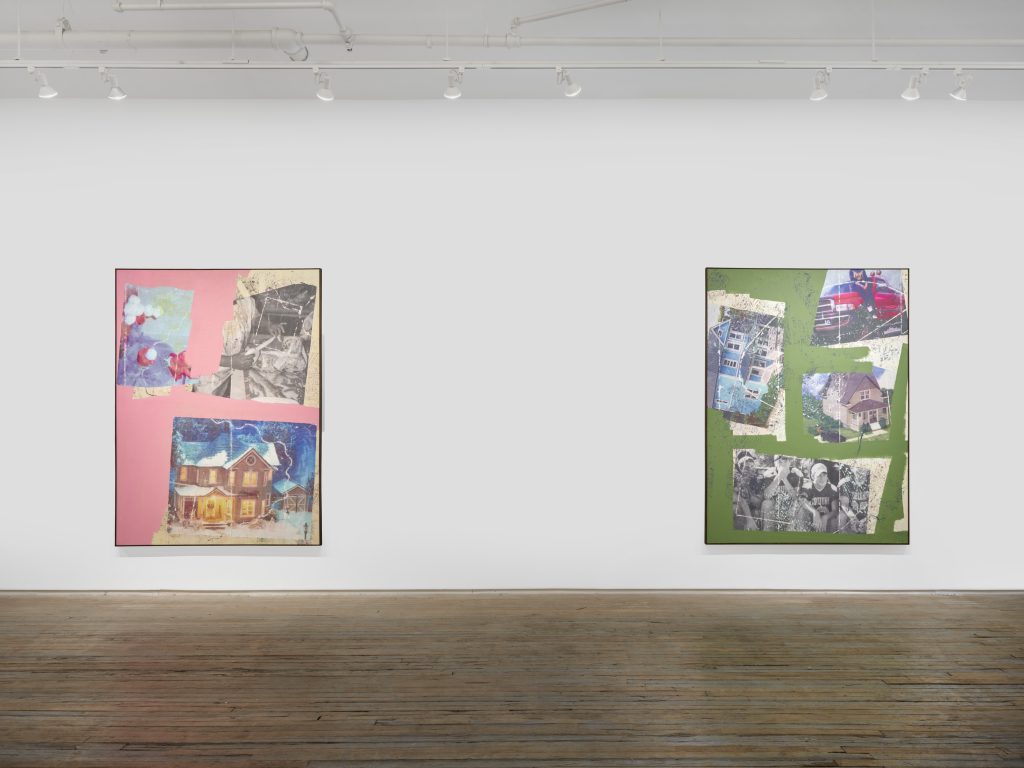In Ben Werther’s entrancing artworks comprising “Townworld,” an exhibition that recently closed at Amanita (a gallery in New York), I feel like I recognize — or at least might know, their identities just barely escaping me — the people and places that I’m looking at. A discussion of the show that was shared by the gallery similarly linked Werther himself to the subject matter, and that feeling of connection carries over to standing as a visitor and viewer in front of the artworks. They’re welcoming, actually — even if the art’s far-reaching, pictorial sweep, fueled by flourishing forms, makes its universe feel theatrical if you linger a while.
It’s the satiation and happiness of the present, of watching a scene unfold that those involved and connected will carry with them, at least for now.
Werther’s artworks combine repurposed imagery gathered from old high school yearbooks and model train catalogs with streaks of acrylic laying atop and across the images and surfaces, layering pictorial logics in a manner that lets both the photos and the paint remain surprisingly full, pushing against each other time and again. The startling, emphatic clash makes each side of that equation feel tense with the process of possibility: both the vulnerability of hope and the disregard of or disconnection from it. Here, a break with the present moment exists in synchronicity with that original moment itself.
The reused images tend to hold large portions of each artwork to themselves, expanded to a size that only a handful fit across pieces measuring seven feet in height, and the collaged breadth imparts a feeling of commanding place to the contents of each image that we’re looking at. In these artworks from Werther, the briefest of glances, like looking upon a single, solitary scene, exists for a moment as though it won’t end. It, of course, does: time passes. The individual images in Werther’s artworks end, and something else — connected or not — grows alongside them. But in the flow of each picture that the artist developed in these works, you can feel for a time as though they won’t conclude.
If you’re thinking of that in the context of real-world memory, then whether or not you appreciated things to that extent in the moment, the feeling is here now. Quickly, we’re already starting to look back on what was just unfolding in front of us, the present becoming memory.
Familiarity and togetherness emanate from the pictorial forms that are situated across Werther’s aesthetic world. The feelings, growing from how the images endlessly add to each other without ever really diverting particularly dramatically or somehow cancelling out an adjacent vision, are disconnected from specifics. They’re disconnected from backstory, as strictly speaking, there’s really no obvious indication (that I noticed when visiting) in the substance of what we’re looking at of where any of it actually came from. (Still, you feel enmeshed together.)
Even though Werther’s pictures are large and their consistent internal energy relatively attention grabbing, the way they are assembled in glacially paced collage — sometimes disparate, diverging images put right alongside one another — reminds us of the flat nature of the artistic surface we’re looking at… and that it’s not “real.” And though the imagery is photographically realistic, we end up eventually taken out of the idea there is a totality to what we’re gazing upon. You might start suspecting you’re looking at a specific overarching narrative, or what we’d anticipate would end up being that, but the granular elucidation of what we are actually looking upon is just not there. We look for existential explanations outside of the momentary one and we don’t get that, left instead with enrichment… elsewhere.
All of this strikes me as realistic to how a lot of sensed experience — the stuff of recollection — is actually formed, but in any case, it’s the kind of framework and ground rules that Werther sets down in these artworks. We are here, but we don’t know how we got here or how who and what we’re looking at got here either. Yet, you feel it’s okay.
And in the meantime, the imagery is reliable, safe, and secure, and even when color abruptly disrupts underlying or accompanying imagery, the pace is such that you can just linger and feel the effects of that. Pictorial transitions are stabilizing instead of upending, as much as is really going on here. It’s something you can come back to, even in the face of the degradation you can see in the reproduced pictures or imagine among their real-world correlates. Even as much as these artistically realized places feel inherently limited and essentially blocked off by the emphasized confines of their pictorial boundaries, I still end up feeling like there’s more here, like there’s ambition and mutual acknowledgment behind and amid what we’re observing. The artworks… and you, when you’re looking at them… freely turn inwards.
Though Werther’s exhibition is closed, I would enjoy seeing more from this artist. Thank you to Amanita for their assistance in putting this article together.


Featured image: Townworld, Installation shot (Left: Grandma’s Cottage, 2025; Right: Green Easter, 2025). Photo by: Guang Xu. Courtesy of Ben Werther and Amanita.
You may also like
-
Diana Kurz at Lincoln Glenn in New York: A Review of a Shining Art Exhibition
-
Dustin Hodges at 15 Orient in New York City: An Ensnaring Exhibition at an Exciting Gallery
-
Maren Hassinger at Susan Inglett Gallery in New York: Reviewing an Uplifting Art Exhibition
-
Enzo Shalom at Bortolami in New York City: Reviewing an Entrancing Exhibition of Paintings
-
Carolina Jiménez: “All That We Carry” at HESSE FLATOW in New York: Reviewing a Stirring Textile Art Show
